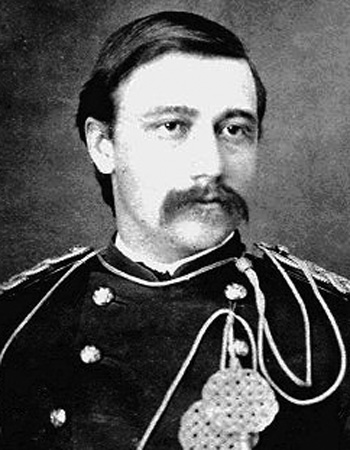
|
Henry M. Harrington |
 |
|||
| Rank, Service | ||||
2nd Lieutenant O-1, U.S. Army |
||||
| Veteran of: | ||||
|
||||
| Tribute: | ||||
Henry Harrington was born on April 30, 1849, in Albion, New York, but was raised in Coldwater, Michigan. He was commissioned a 2Lt in the Cavalry through the U.S. Military Academy at West Point on June 14, 1872, ranked 17th in his class. Harrington was first assigned to the 7th Cavalry in Charlotte, North Carolina, and spent the winter of 1872 and spring of 1873 training the troops of Company C in preparation for their posting in the West. The 7th cavalry was then posted as a regiment to Forts Abraham Lincoln and Rice in the Dakota Territory. From there, Lt Harrington went with them on the Yellowstone Campaign of 1873, where he first experienced combat, and then on the Black Hills Expedition of 1874. The year 1875 was spent training and patrolling in the Dakota Territory until May of 1876, when the 7th Cavalry headed west for their rendezvous with the Sioux Indians along the Little Big Horn River. He met his fate, along with the rest of the battalion under Custer's personal command at the Battle of the Little Big Horn on June 25, 1876. Harrington was placed in command of Company C, 7th Cavalry, at the outset of the campaign when his captain, Thomas W. Custer, was assigned as aide-de-camp to LTC George A. Custer, field commander of the 7th U.S. Cavalry. Lt Harrington's battlefield heroics, often attributed to George Custer by journalists of the time, caused the Sioux warriors to refer to him as "The bravest man". As Company C fell back toward Last Stand Hill, Harrington fought a rear guard action while wielding his two Colt revolvers as his soldiers retreated. At Last Stand Hill, he led a final charge of five mounted soldiers in a breakout after the death of Custer. When the battle was over, Harrington's remains could not be found, beginning a mystery that endured for 130 years. In the Spring of 2006, with the help of forensic scientists at the Smithsonian Institution, Henry Harrington's remains were identified in the museum's anthropological collection. An Army physician, Dr. Robert W. Shufeldt, discovered Harrington's remains a year after the battle many miles from the battle site and misidentified them. |
||||
|
||||

